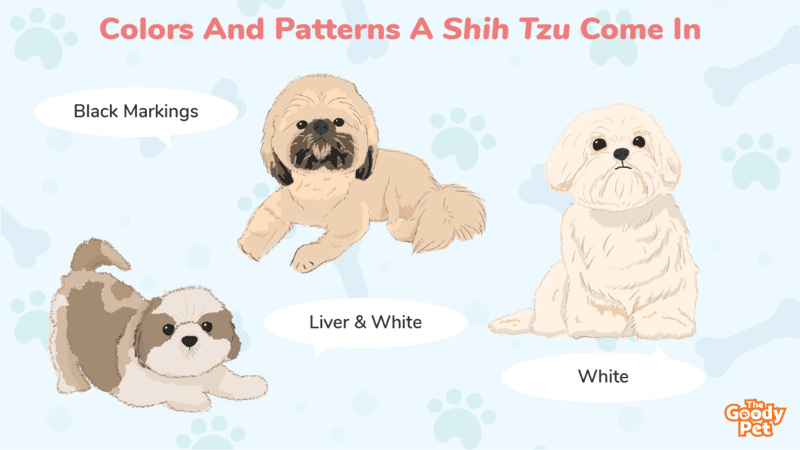The name Shih Tzu translates to “lion dog” which is what these cute little toy doggies were bred to look like. If you have ever seen a Shih Tzu or interacted with one, you probably know that the adorable fluff balls are the furthest thing from the ferocious cats that inspired their development
Shih Tzus are widely celebrated and wildly popular for their endearing aesthetic. From their long fluffy coats to their large, curious eyes, it is hard not to fall in love with these dogs.
What many people do not realize is that there are up to 27 types of Shih Tzus based on coat type, color, and patterns. We shall be taking a look at some of these including the rare white coat and brindle pattern.
27. Long Coat
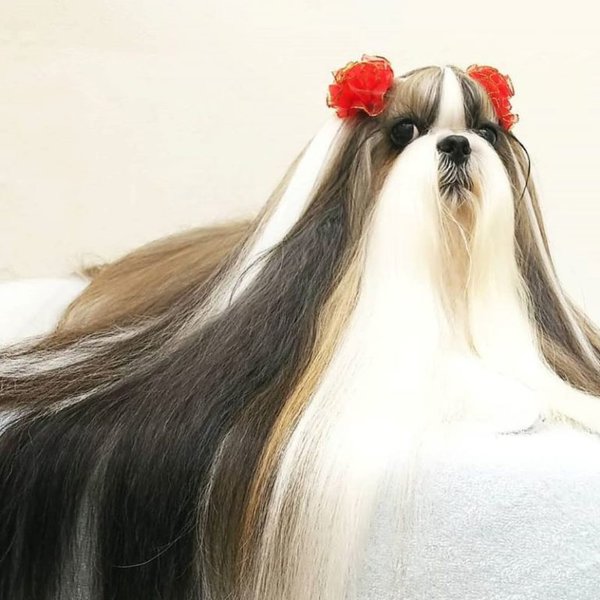
Shih Tzus only have one coat which is the long coat. The many short-haired Shih Tzus out there get that aesthetic as a result of grooming. Short-haired Shih Tzus may also be a result of mixed breeding with short-haired toy dog breeds.
The long coat on a Shih Tzu may either be loose and wavy or it may have a curly texture to it. The fur is usually a bit coarse to the touch. However, it is possible to get it silky smooth with special grooming.
26. Black
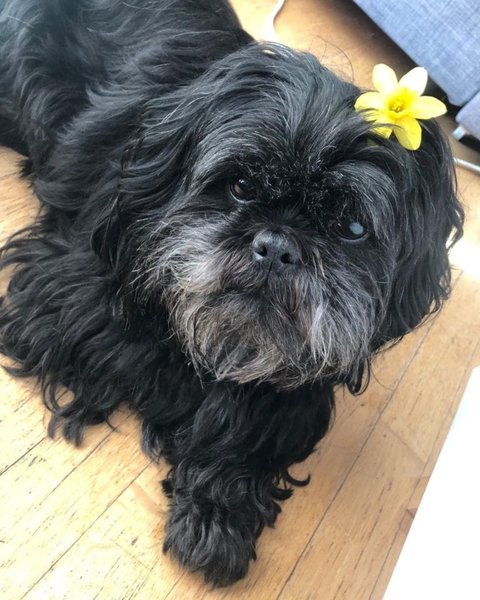
All black Shih Tzus are completely covered by black fur. If there is a patch of white or other color like tan then the Shih Tzu no longer qualifies as a black variation.
The black fur in these Shih Tzus, however, is not always the same shade especially as the dog grows older. You may have some parts appearing as lighter or less intense shades of black especially on the face, ears, and paws.
25. Black & White

Solid black and white Shih Tzus are not commonly found as a variation within this breed. They may have black as the main coat color covering majority of the body with white appearing as markings on different sections.
Some black and white Shih Tzus also have the two colors somewhat equally distributed over the coat.
It is only in very rare situations that you will find a black and white Shih Tzu where the white fur is dominant and the black fur appears as the markings.
24. Blue
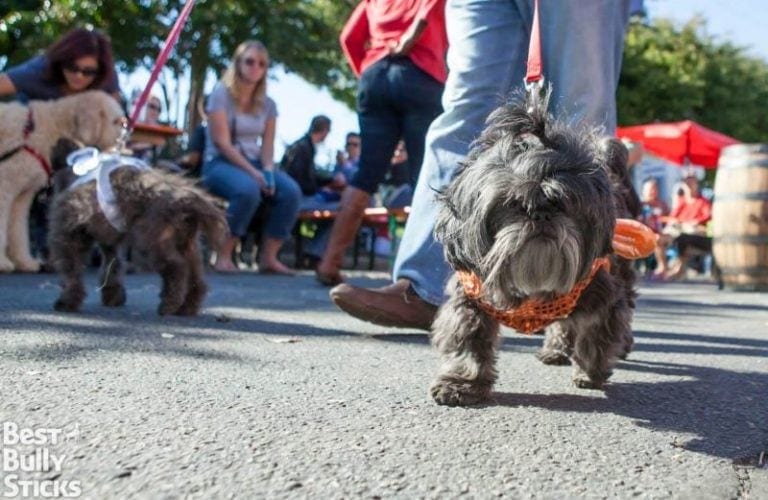
Blue Shih Tzus may look like any other black SHIH Tzu especially from a distance. Even up close, it may be difficult for the inexperienced dog enthusiast to tell the two variations apart.
Blue Shih Tzus have a watered down shade of black fur. It is not blue in the typical blue sky or ocean shades. Instead, their coats have more of a powdery dark gray appearance with dark blue undertones.
23. Blue & White
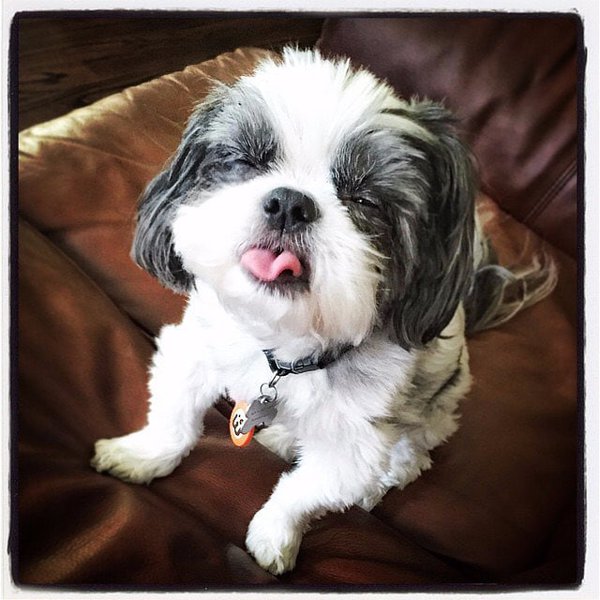
Blue and white Shih Tzus are in a lot of ways just like black and white Shih Tzus. They tend to have the same distribution patterns with mainly dark fur and white markings.
With blue and white Shih Tzus, the dark part of the coat has watered down black fur which appears a shade of blueish-silver.
The white fur is similar to that in black and white Shih Tzus. However, due to the lighter and more faded nature of the blue parts of the coat, there is less clear contrast between the two colors in blue and white Shih Tzus.
22. Silver

Silver Shih Tzus vary in shade intensity. Some have a very shiny silver coat while others may have a faded and almost ashy gray color.
It is also important to appreciate that Shih Tzus in general tend to have gray color changes to their coat even when they were born with a different-colored coat. The age of the Shih Tzu is therefore an important consideration when trying to identify true silver varieties.
21. Silver & White

The silver and white Shih Tzu combination is quite common among the bicolor variations. These doggies are predominantly white with silver markings often around the face.
The silver appears as a watered down shade of black. In some Shih Tzus, the silver may be so watered down that it almost blends in with the bright and shiny white sections of fur.
In other silver and white Shih Tzus, the silver has a bit more of a solid quality to it which creates distinct contrast between the two colors.
20. Brindle
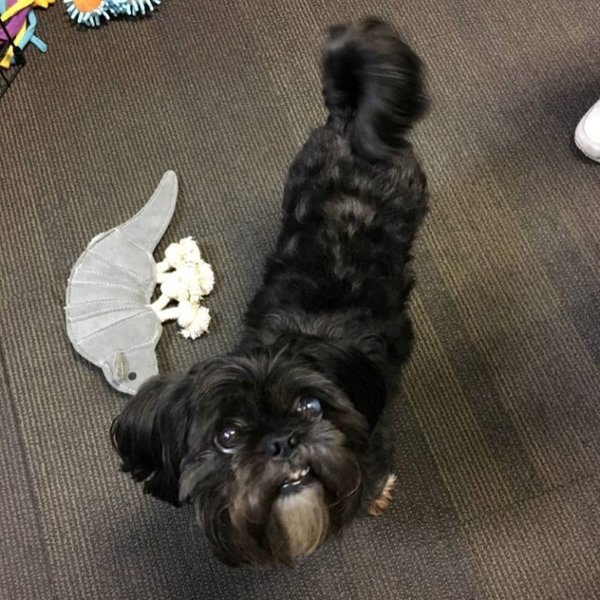
Brindle Shih Tzus have a combination of a dark color like black or even blue and a lighter color which is usually a shade of brown.
The brown fur acts as a sort of base coat with the darker fur forming stripes across this base.
On long coats like the Shih Tzu’s, this may be a bit difficult to appreciate. However, trimmed Shih Tzus or young puppies that still haven’t grown their fur to full length demonstrate the brindle markings more clearly.
19. Brindle & White
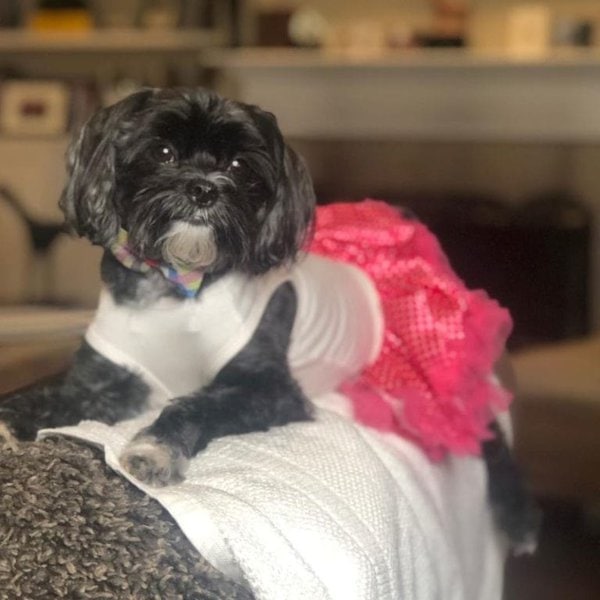
Brindle and white Shih Tzu combine the most common white markings with the rarest brindle pattern in the Shih Tzu breed.
The brindle coat covers most of the body. The white markings occur as small and distinct patches usually around the head and limbs.
With very long-haired Shih Tzus, these white patches may be difficult to pick out especially if they are on lower parts of the body like the belly.
18. Gold
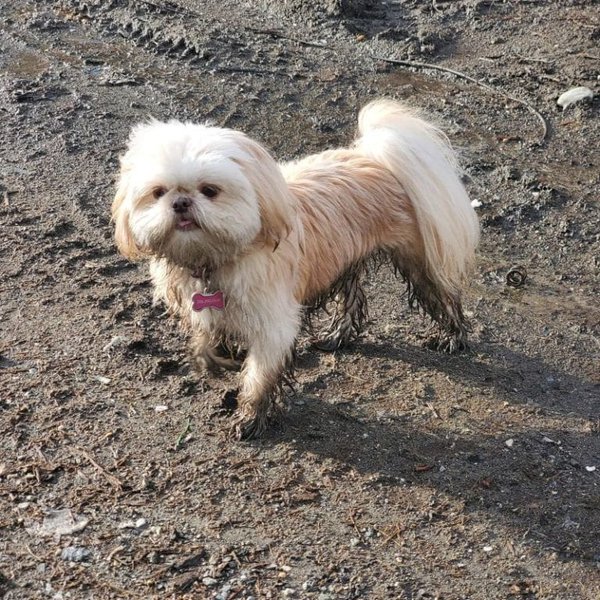
Gold or Golden Shih Tzus are not a mix between Shih Tzus and Golden Retrievers as many people think. Gold Shih Tzus are purebred dogs. They are a variation of the breed known for their brown fur.
The shade of brown varies from one Gold Shih Tzu to another. It may be a darker tan brown or a bright and shiny golden shade.
Gold Shih Tzus sometimes have a reddish-pink nose but may also have a black nose like other varieties.
17. Gold & White
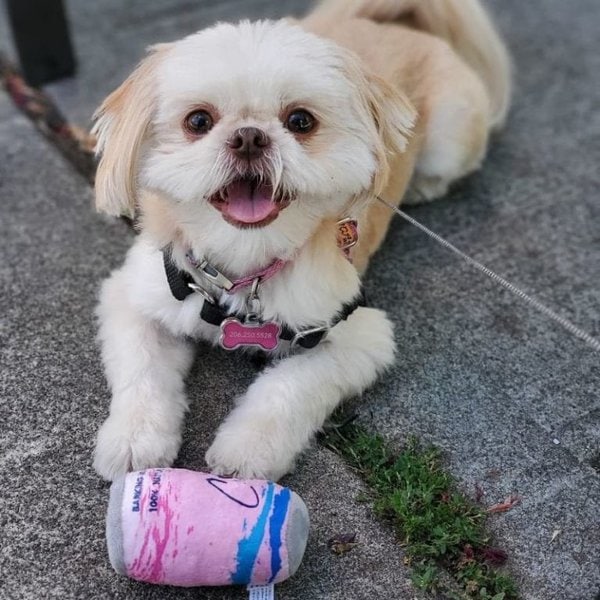
Gold and white Shih Tzus are a rare bicolor variation known for their refreshing combination of these two bright and beautiful colors. In most cases, the gold fur will cover most of the body.
In contrast, the white fur serves as markings limited to the chest, neck, face, and paws. It is only in very rare cases where the white fur covers majority of the body.
These Shih Tzus may also have a black mask cover with black fur over the snout.
16. Liver

Liver Shih Tzus have a very unique and polished beauty to them. There is something special about the chocolate-brown shade of fur that works very well with the long and glossy finish of the Shih Tzu coat.
The liver coat is present all over the body with no white markings allowed for this variation.
You may also notice that the nose on a liver Shih Tzu is not always black. It may have a chocolate brown shade very similar to the rest of the liver fur on the Shih Tzu.
15. Liver & White

Liver and white Shih Tzus are basically a variation of liver Shih Tzus where there are white markings anywhere on the body.
It could be a few white patches on the face with an entirely liver body or an almost even split between these two colors.
The black face mask is not very common in liver and white Shih Tzus. It may also be very difficult to distinguish especially if the rest of the face is liver colored.
14. Red
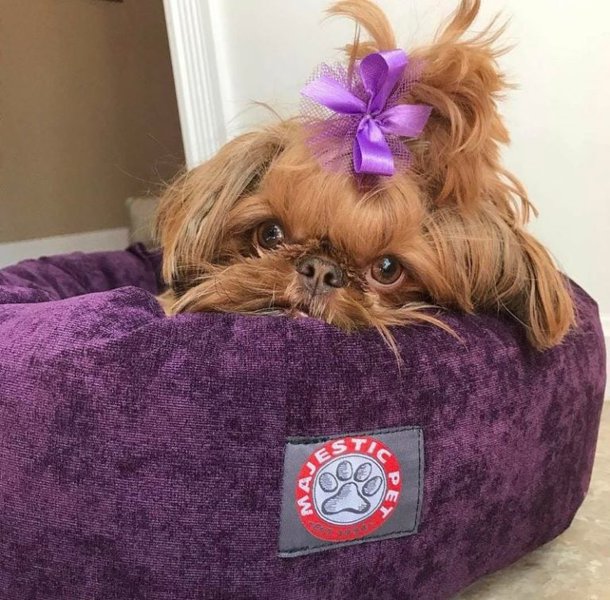
Red Shih Tzus are often bunched up with brown or golden varieties. However, they have a very distinct rusty quality to their shade of brown that sets them apart from other similar Shih Tzus.
The red fur is present all over the body. If there are white markings, the Shih Tzu is not considered a true red variation. However, black markings from the class black face mask are acceptable within this variety.
13. Red & White
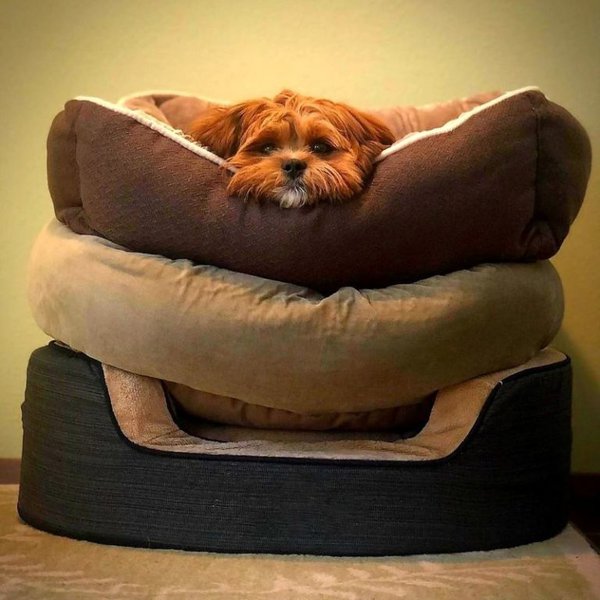
Red and white Shih Tzus don’t always look like Shih Tzus. In fact, you may be forgiven for mistaking them for a super fluffy Cavalier King Charles Spaniel that has a similar coloring and pattern.
The predominant color varies from one red and white Shih Tzu to the next. Some have mainly white fur with red markings on the face and ears. Others are mainly red with white patches on the face, neck, and limbs.
12. Black Gold & Silver
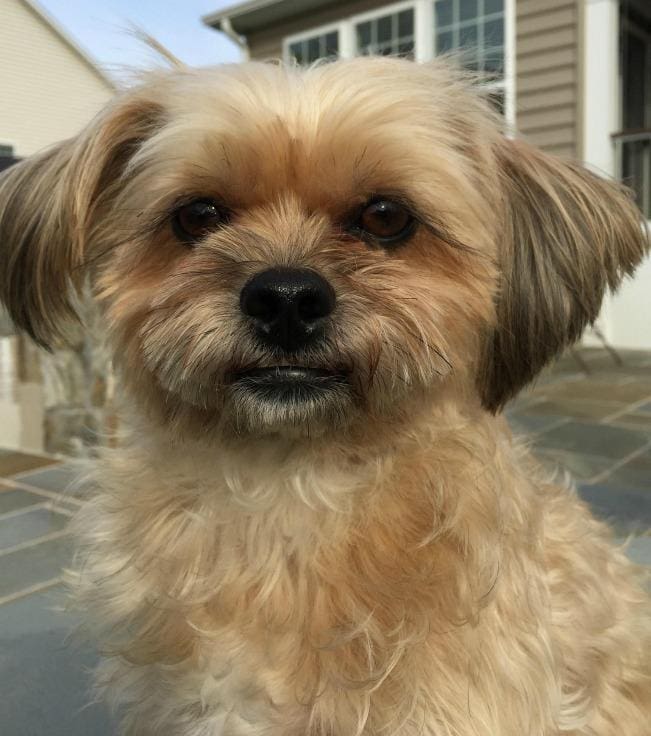
Shih Tzus also come in tricolor combinations in which case the black, gold, and silver. This is a very rare color combination that itself comes in many different patterns.
The most common combination is a black and gold body with white markings mainly around the face. It could also be a mainly gold Shih Tzu with white markings over the chest and a black face mask.
The most rare possibility is a sable black, gold, and silver Shih Tzu. Here, the black appears as tip parkings on both gold and silver fur.
11. Black Gold & White
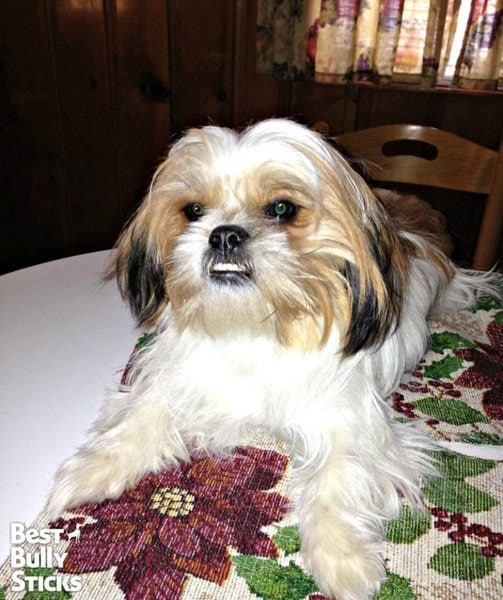
Another common tricolor combination with Shih Tzus is black, gold, and white. The three solid colors contrast beautifully with each other. The gold fur in this case varies in shades from bright and brilliant tan shades to darker brown.
The white fur may either cover most of the body or appears as chest and limb markings.
The black fur in black, gold, and white Shih Tzus may just appear simply as a face mask over the snout and around the eyes.
10. Black White & Silver
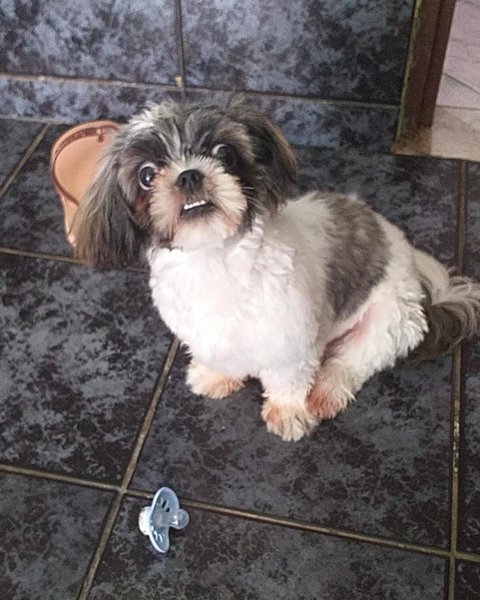
Black, white, and silver Shih Tzus are another variation of the breed that prove that not all black fur is watered down where there is silver present.
In these cases, the dog is mainly silver and white. The white covers most of the body especially the torso and limbs. The shiny silver fur will appear as large patch markings usually on the face.
Finally, these black, white, and silver Shih Tzus will also have solid black fur as small markings almost predominantly on the face.
9. Silver Gold & White
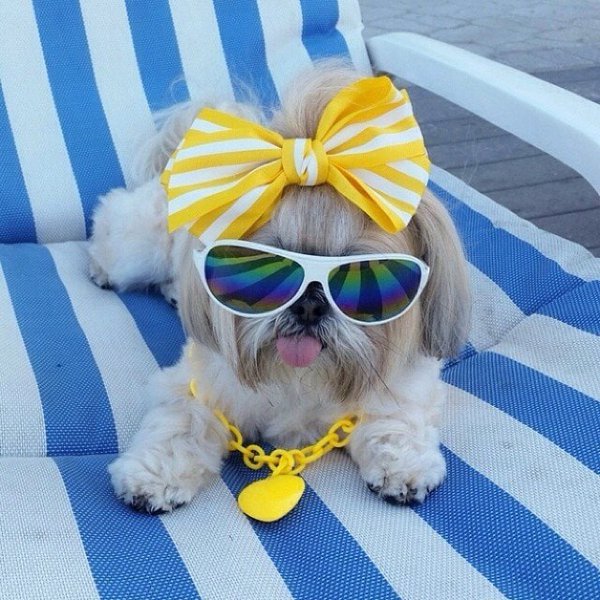
The tricolor combination of silver, gold, and white is one of the most common varieties of the Shih Tzu based on coat colors.
These Shih Tzus are more often than not predominantly white. The silver and gold or tan patches act more as markings. These markings may appear anywhere on the body but are usually on the face and ears, back, and chest.
The colors complement each other perfectly for a truly beautiful Shih Tzu.
8. White
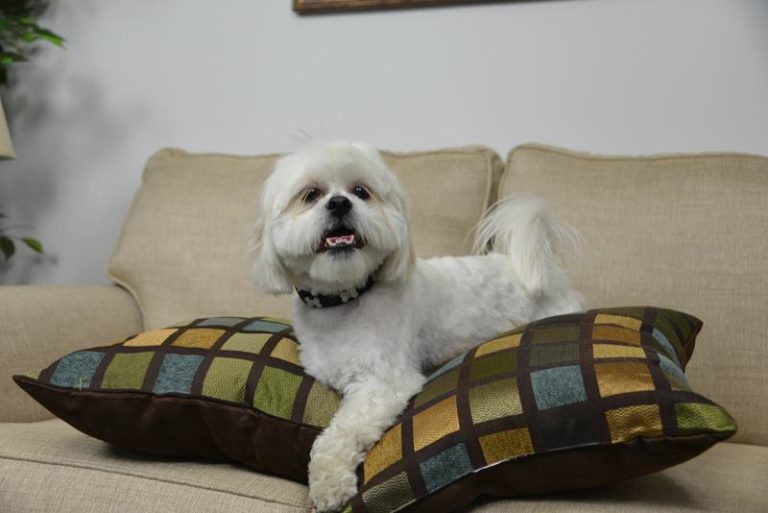
White Shih Tzus are incredibly rare. This is a shame as they are some of the most beautiful dogs out there.
They have all white fur which is perfectly complemented by the thick, long, and shiny nature of Shih Tzu coats.
White Shih Tzus may either be leucistic or albino. The Leucistic variety have recessive genes that give them white fur but leave other surfaces like eyes and nose pads pigmented.
With albinism on the other hand, there is no pigment on the nose and eyes in addition to the skin and fur.
7. Black Markings
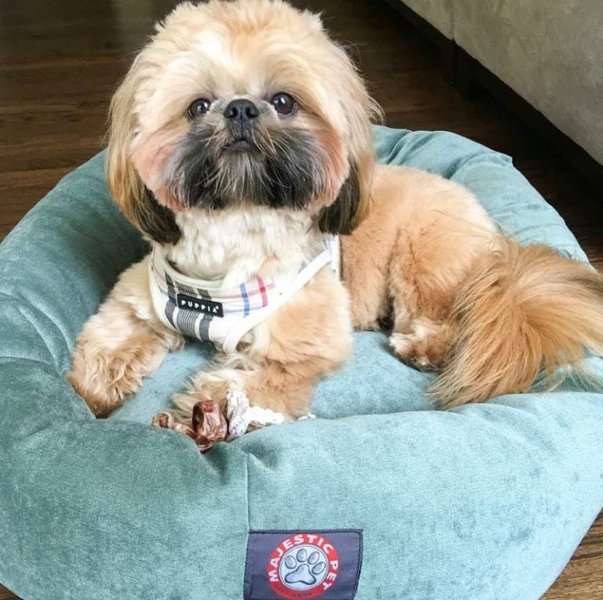
Black fur is considered a marking on Shih Tzus if it covers the least surface of any other colors present. It is common in tricolor combinations with other colors like gold, tan, silver, or white.
In some cases, the black markings on a Shih Tzu may only appear as a black face mask as shall be discussed shortly.
If the black fur covers a majority of the coat as is the case with black bicolor variations, then the second minority color is what is considered the marking.
6. Tan Markings

Tan markings are not a very common occurrence in Shih Tzus. More often than not, they appear as patch markings with a minority coverage on tricolor Shih Tzus. This includes common varieties like the popular black, gold/tan, and white Shih Tzu.
The distribution of tan markings on Shih Tzus is determined by genetics. The patches can occur anywhere from the face and ears to the back and limbs.
5. White Markings
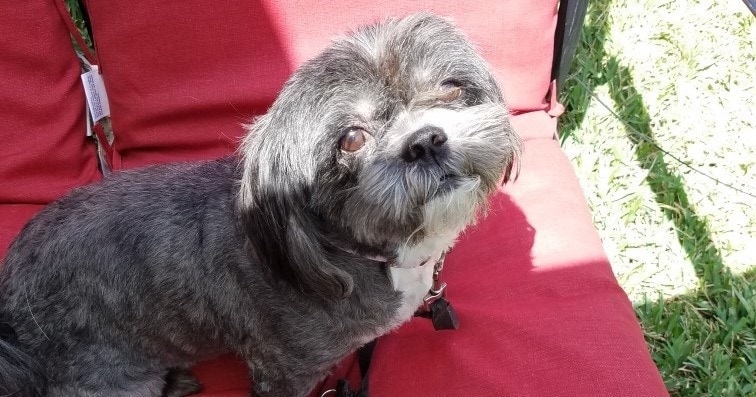
White markings are the most commonly found on Shih Tzu dogs that have more than one color. The white fur covers a minority of the dog’s coat. These patches will usually be distributed on lower parts of the dog’s body like their belly, chest, and paws.
The white markings may also be on the face.
Shih Tzus with white markings may either be bicolor or tricolor. With such a scope, it is no wonder that it is the most common pattern.
4. Merle
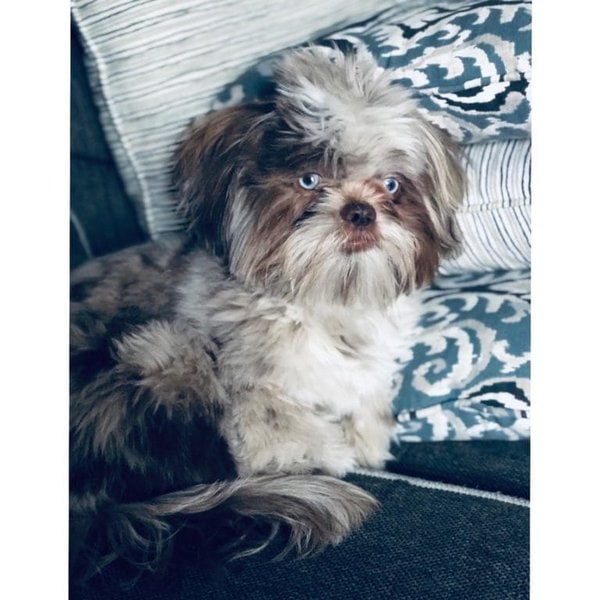
Merle Shih Tzus are very rare. They have unique, mottled spots all over the body. These markings vary in color but are usually either black, silver, blue, and in very rare cases, brown or gold.
The markings are randomly scattered over predominantly white or grayish fur.
In some merle Shih Tzus, the genes responsible for the markings also affect eye and ear development and may cause visual or auditory impairment for the dog.
3. Sable
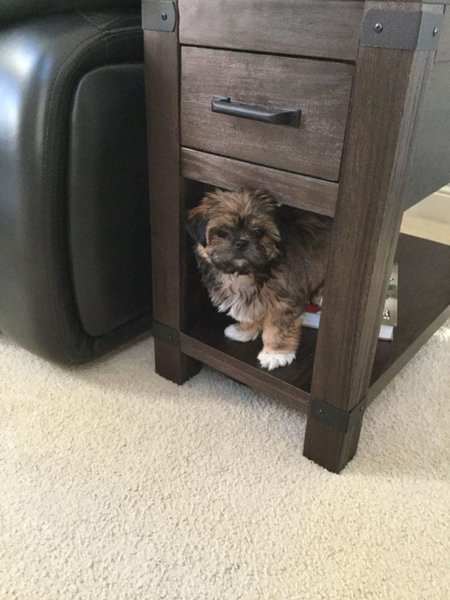
Sable Shi Tzus have black ends on all the fur over the entire body. The rest of the fur may be any other lighter color from brown or tan to silver and even white. The contrast between the lighter fur and black tips creates a beautiful color gradient that makes Sable Shih Tzus beautiful.
This may be a bit difficult to elicit especially with Shih Tzus that get dramatically short haircuts. In this case, the best way to identify a sable Shih is through fur that is rarely trimmed especially around the face.
2. Brindle
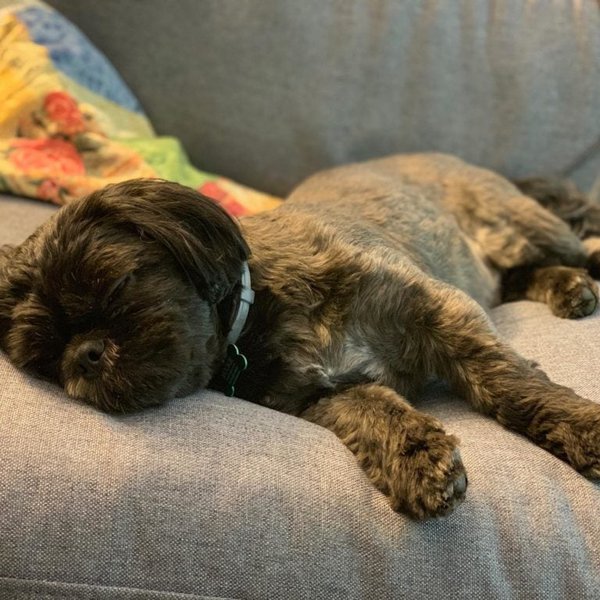
The brindle pattern is arguably one of the rarest varieties in the Shih Tzu breed. It is characterized by black stripes on brown or tan fur.
Due to the long nature of Shih Tzu fur, it is very possible to confuse brindle markings for sable patterns. The key difference is that the latter has the black marking at the tip of all fur strands as opposed to an alternation between black and tan.
The brindle trait is as a result of the presence of the brindle gene. Fortunately, this gene is not associated with any specific health issues.
1. Black Mask
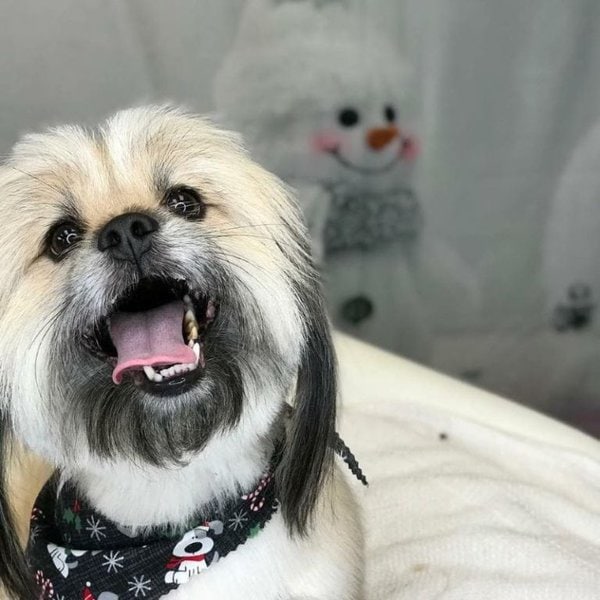
The black mask is a patch of black colored fur found as a distinct facial marking on the Shih Tzu.
It will usually cover the snout from the nose bridge to the chin and lower jaw. In some cases, this black mask may also appear around the eyes and extend to the bases of the ears.
Interestingly, black mask markings are not present in all Shih Tzus. They are also very difficult to elicit in black, blue, or silver Shih Tzu varieties.
Related Questions
What Is The Most Popular Shih Tzu Color? Tricolor combinations like silver, gold, and white or black, gold and white are among the most popular colors for Shih Tzus. These are also some of the most commonly found coat colors. Other popular alternatives are solid black and solid white which are loved for their uniqueness and their niche availability.
Do Shih Tzus Change Colors? Most Shih Tzus change color as they grow older. One of the most commonly seen changes is fading or lightening of the shades which is best appreciated on dark coats like black, liver, and red. Another common change seen with Shih Tzu is graying. This mostly happens when the dog is in its middle to elderly years.
What Color Is Shih Tzu Skin? Underneath all the fluff and color combinations that different Shih Tzus have, they are all pretty much the same in terms of skin color. Most Shih Tzus will have pink skin under their fur. The shades and intensity of pink will vary from one dog to another. This may also change within the same dog as they grow older.

